The Nikon FA is on-lent to my collection from my nice and nephew for testing and minor servicing. I can still remember the day when my brother in law bought it at “the” consumer electronics store in the south-southwest: “Lerche” in Stuttgart. At the time, neither the now omnipresent megastores like “Mediamarkt” or “Saturn” (at least in southwest Germany) nor e-commerce existed, so shopping for “better” electronics was quite different back then: first friends heard about the newest Tec (as I remember mostly Hifi equipment, the first PCs but also Cameras), then you tried to get hands-on catalogues (best with pricelists) next you dreamt for a while, tested similar stuff at the smaller local stores and finally you made a trip to the “big city” (in our case Stuttgart, the other theoretical options would have been Freiburg, which was slightly too small and Zürich which (was) far too expensive) and then you bought it. Secondary costs like fuel or time were of course left out of the calculation.
Back then, the relevant brands for both Hifi and cameras came from Japan because, as we learned in cinema, “All the good stuff is from Japan” (We also believed that a DeLorean or even a Toyota Hilux were cool cars, although we were from Mercedes and Porsche land, the other stuff you usually bought in Stuttgart)
The Nikon FA was a big step compared to our other SLR (our Kodak Retina Reflex S which was already packed away in a cabinet) not only as it was a bit smaller, all settings were visible in the viewfinder, including a microscopic LCD and it had full electronic support. And it was fast. Very fast. I didn’t know exactly how fast a shutter speed of 1/4000 was, but it sounded very impressive.
An introduction to the Nikon FA:
The Nikon FA is a member of the “F” family of Nikon’s “prosumer” cameras and referred as a cousin to the FM and FE. Released in 1983 it was the first camera with “matrix metering”, a rather complex method to ensure perfect exposure by measuring multiple areas of the subject and determine the best lighting by an algorithm the best exposure. Unlike today, this algorithm had to be trained MANUALLY:
A substrate of space of 24 x 36 mm corresponding to a full format of 35 mm (135) format film, on which 24 SPD ( Silicon Photo Diode) chips of 5 mm square were arranged, 4 in vertical and 6 in horizontal, is fixed in place of the film pressure plate of the Nikon FE body ‘…’ They took pictures of various scenes in various situations by an FE equipped with such a device and an ordinary FE arranged side by side. An ordinary FE was, of course, loaded with film and the shooting was made with bracketing (multiple shots at different exposure settings) bit by bit. ‘…’ They were developing the algorithm (a method of solving a problem) with which more optimum exposure can be got, with comparing the frames considered as “optimum exposure” selected from thousands of rolls of film taken that way with the graphics output from the 24 SPDs.
Matrix metering is now the standard metering method of virtually all digital cameras, including the one on your phone. As I learned here, the FA should initially become the FE2, but this plan had to be changed due to the complexity of the “matrix metering” project and the resulting higher price.
Besides its inner secrets, the Nikon FA is a typical 80ies medium size SLR and came in two colours, black and black silver. To operate it needs batteries which are still in wide circulation and available anywhere: Either two LR44, two SR44 batteries, or one 3V CR 1/3N. For me, it has a perfect size, and once you understood how to operate it, it could be the perfect everyday camera for you. Due to the plastic prism housing, it is not as “though” as the FE and FM, but typically for Nikon, it is also built to last. However, for everyday SLR use I will stick to my Kodak Retina IV and the Zenit TTL for two reasons:
- This is not my camera, so I really have to take care of it
- The body alone has a higher value than the rest of my collection
Of course, the camera has a self-timer, activated with the lever on the left side of the body, a tripod and cable release socket, a hot shoe and an additional PC-sync connector. And it comes with a build in viewfinder cover to avoid light leaks if your eye does not cover the eyepiece.
Taking pictures with the Nikon FA
WARNING: To operate this complex masterpiece, I strongly suggest to, at least this one time, RTFM and focus here on the basics:
Turn the small lever surrounding the rewind spool to unlock it. Pull it out to open the camera. Insert the film on the left side of the take up spool, close the camera. Set the right ASA (25 – 4000) by lifting up and turning the ASA ring on the left side. Rewind and cock the shutter. Turn the camera on by pulling the advance lever to the ready position. Select your desired mode:
- P for program automatic: just focus, the camera will do the rest but informs you which shutter speed is selected For longer lenses (+ 135mm) the camera uses a faster program to avoid blurred images
- S for shutter priority automatic: Select a shutter speed (1 – 1/4000s), the camera selects the aperture (best for shooting moving objects). If the selected speed would result in a wrong exposure, the camera will compensate this for you
- A for aperture priority: Select the f-stop, the camera defines the shutter speed and in case warns you to change the aperture
- M for manual control. In this setting, the camera switches to the 60/40 centred priority measuring, which can be manually activated with the little button in the lower right corner of the lens. The LCD in the viewfinder indicates the right exposure with a small but readable +, – or +- symbol
If you can afford more than one lens, change them by pressing the button on the right side of the lens. Tip: if you adjust the little black dot on the lens with the dot on the body, the lens instantly fits. Focus using the split image in the middle of the matte screen, then press the shutter half and read the small LCD in the viewfinder. It will leave you confused by displaying “C25o”. Don’t panic, nothing is broken: Until the picture counter reaches “1”, the camera stays in manual mode with a fixed 1/250 shutter speed and no light meter reading, so sunny f16 the first two shots and then start to shoot with the assistance of the magic AMP Matrix Metering.
If you would like or have to shoot (empty or missing battery) in the manual M250 mode or use “B”, press the little button right of the viewfinder to unlock the speed dial.
To check the depth of field of your selected aperture, press the little lever on the right side of the lens.
To bracket shots, you can compensate -/+ two stops by pressing the small button left to the viewfinder and turning the ASA wheel. If you connect a flashgun, the cameras vertical-travel Nikon-designed, Copal-made focal plane shutter allows a sync speed up to 1/250 s (I learned a lot while writing this post: this is fast). For long time exposures and for astrophotography the camera exposures as long there is juice in the battery if needed. (As soon as I’ll find the adapter ring, I’ll try connecting it to my 1000mm Celestron scope again). For double exposures, pull the small lever around the advance lever while cocking the shutter. When the film is full, press the rewind button on the bottom and rewind as usual.
Accessories are plenty: focussing screens, winders, Nikon flashguns which activate another crazy flash program which I did not understand. And of course, there are lenses. Lots of beautiful Nikkor lenses
To summarize this review, I would like to quote Wikipedia:
The Nikon FA is still regarded as one of the most fascinating SLRs of its generation.
Indeed, it is.
| Brand | Nikon |
| Camera | FA |
| Year built | ?, produced between 1983 and 1987 |
| Serial number | 5064777 |
| Lens | Nikon Nikkor 50 mm f/1.4 5654155 and 35mm f/2 296243 |
| Shutter | titanium-bladed vertical-travel focal plane shutter |
| Film-format | 35mm |
| Special features | First camera with matrix metering |
| Accessories | – |
| Manufactured by | Nippon Kogaku K.K. now Nikon Corporation |
| Date of purchase | on lent since 2018 |
| Price | – , bought for xx DM |
| Place of purchase | On lent from my nice and nephew, originally bought at Lerche, Stuttgart |
Tips & Tricks:
As the Nikon FA is less famous than the professional F series or even her FM/FE siblings, you might be able to buy them slightly cheaper. But don’t forget: this was and still is a premium camera with matching prizes. Again, I quote Wikipedia:
The FA (like the rest of the compact F-series) was built to Nippon Kogaku’s traditional and unusually high (and expensive) standard of workmanship for amateur-level SLRs. It used high-strength alloy parts, hardened metal gearing, ball bearing joints and gold-plated electrical switches; all made to precise tolerances and largely hand assembled, in an era when most other manufacturers switched to high-tech plastics, simplified modular construction and coarser tolerances to lower costs in the face of competitive pressure. As a result, the Nikon FA could endure conditions that would cause virtually all other contemporary non-professional-level SLRs to break down mechanically. A higher price was considered a fair trade for impressive durability.
Film purchase & processing:
The camera can use any 35mm film from 25 to 4000 ISO, which can be developed anywhere. Most of the lenses have an Infrared index, so if you would like to try this as well, go for it.
Useful Links:
https://imaging.nikon.com/history/chronicle/cousins14-e/index.htm (Must read: how Matrix Metering was designed)
http://www.mir.com.my/rb/photography/hardwares/classics/nikonfa/fa4.htm (Handy table of the LCD readings)
https://kenrockwell.com/nikon/fa.htm (Ken Rockwell’s review of “the most advanced manual-focus camera ever designed by Nikon”)
https://blog.jimgrey.net/2017/06/28/nikon-fa/ (Jim Grey’s Nikon FA review)
https://www.anatomyfilms.com/nikon-fa-forgotten/ (Review)
http://www.mikeeckman.com/2016/02/quick-review-nikon-fa-1983/ (Another review)
https://www.butkus.org/chinon/nikon/nikon_fa/nikon_fa.htm (As usual, Mike Butkus has the manual for you) Seriously, please read the manual.


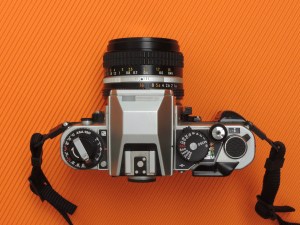





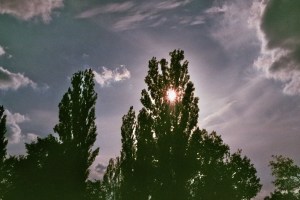


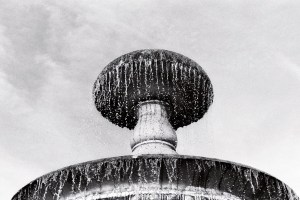
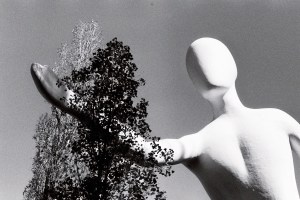
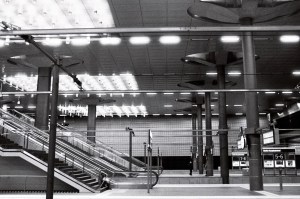
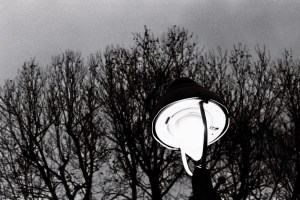
I have one of these, and like it okay. I’d rather shoot my F3 though. And you’re right, please read the manual for this one, don’t go it alone.
I will run some films through it before I’ll return it, then maybe I’ll try to get my hand on an FE or FM, the F 3 is above my collection “allowance”. On the other hand, I might be in Budapest soon and you never know what’s on the shelf there…
Soooooo I have to correct something on this post, which is otherwise fantastic.
You have the A and S settings wrong.
A is for „Aperture Priority Mode“ which means you select the F stop, and the camera will figure out the best shutter speed.
S is for „Shutter Priority Mode“ which means you select what shutter speed you want. For this mode to work, you need to set the aperture to the max setting (aka the largest F stop #). The camera will then find the appropriate F stop to use for the selected shutter speed.
For Program Mode you will also need to set the aperture to the max setting in order for it to operate correctly.
This is all in the instruction manual…RTFM 😉
Hi, you are totally right. Although I RTFM, I usually write my posts in German first (I was semi forced by some friends in Hungary to write a bi-lingual blog) and in translation I made this obvious mistake which I hopefully corrected now. And thanks for the “otherwise fantastic”, thank you!